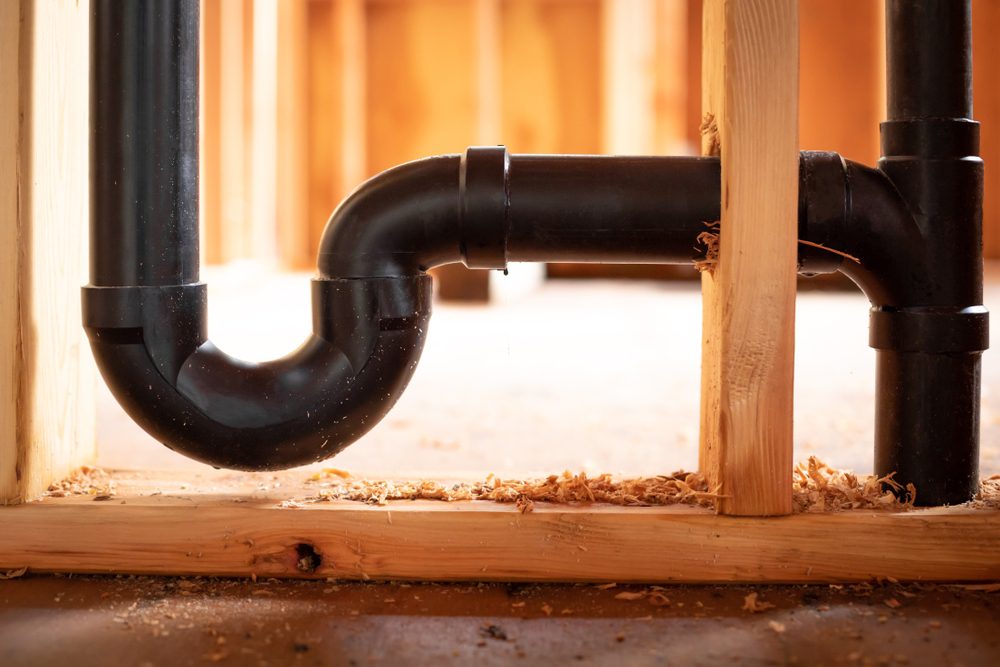Achieving Proper Ventilation in Your Plumbing System: How
Achieving Proper Ventilation in Your Plumbing System: How
Blog Article
The article further down relating to The Upsides of Proper Ventilation in Plumbing Design is exceedingly captivating. Check it out for your own benefit and decide what you think of it.

Proper air flow in pipes systems is commonly overlooked, yet it is vital for keeping the capability and safety and security of your home's pipes. Air flow assists manage atmospheric pressure, stop the accumulation of damaging gases, and ensure the efficient removal of waste. In this guide, we will certainly discover the importance of proper plumbing ventilation, exactly how it works, and the benefits it offers your plumbing system.
Understanding Ventilation in Plumbing
Ventilation in pipes describes the network of pipes that allow air to move through the drainage system. These vents offer numerous objectives, consisting of controling air pressure within the pipes, preventing sewage system gases from going into the home, and aiding in the smooth circulation of wastewater.
Exactly How Ventilation Functions in Plumbing Equipments
Air Pressure Policy
Correct ventilation keeps balanced atmospheric pressure within the plumbing system. When water moves with pipelines, it displaces air. Without sufficient air flow, this variation can create adverse stress, causing reduce drains pipes or siphoning of water from catches, which can trigger unpleasant odors to seep right into the home.
Stopping Sewer Gas Build-up
Among one of the most vital functions of plumbing vents is to avoid sewage system gases, such as methane and hydrogen sulfide, from gathering within the home. These gases can pose major health and wellness dangers and are extremely flammable. Vent pipes allow these gases to escape securely outdoors.
Helping in Waste Removal
Ventilation assists in the reliable elimination of wastewater by stopping airlocks in the drain system. When air can flow openly with the vents, it allows water and waste to move efficiently through the pipelines, lowering the danger of clogs and back-ups.
Sorts Of Pipes Vents
Main Heap Vent
The main pile vent, additionally known as the vent stack, is the primary air vent in a plumbing system. It extends from the main drainpipe align via the roof, enabling gases to get away and fresh air to enter the system.
Branch Vent
Branch vents connect to the major pile air vent and serve private components, such as sinks, commodes, and showers. These vents make certain that each fixture has sufficient air flow to operate correctly.
Air Admittance Shutoff (AAV).
An Air Admission Shutoff (AAV) is a one-way shutoff that permits air to get in the pipes system without the demand for a traditional vent pipe extending through the roofing system. AAVs are frequently utilized in improvements or locations where mounting a basic air vent is unwise.
Indicators of Poor Air Flow in Pipes.
Slow Draining Fixtures.
If your sinks, bathtubs, or toilets are draining gradually, maybe a sign of inadequate ventilation. Poor air flow can develop a vacuum result, making it hard for water to drain pipes appropriately.
Gurgling Sounds.
Gurgling audios coming from drains pipes are usually a result of air being drawn with water catches because of adverse pressure in the pipelines. This is a clear indication of inadequate air flow.
Unpleasant Smells.
Sewer smells inside your home are a warning that your pipes system is not correctly aerated. This could indicate that sewage system gases are not being properly aired vent outside, bring about potentially hazardous conditions.
Usual Air Flow Mistakes.
Insufficient Vent Sizing.
Making use of small vent pipes can lead to inadequate air circulation and stress discrepancies in the system. It's important to utilize vents that meet the specific needs of your pipes system.
Improper Vent Placement.
Placing vents also far from the fixtures they serve can decrease their efficiency. Appropriate placement makes certain that air can stream easily and successfully with the system.
Disregarding Code Requirements.
Building ordinance provide particular guidelines for pipes air flow. Disregarding these codes can result in a system that fails to operate properly and might cause costly repairs or health hazards.
Advantages of Correct Air Flow.
Improved System Efficiency.
Appropriately aerated pipes systems run more efficiently, with less obstructions, faster draining, and much less pressure on the pipes. This effectiveness expands the life-span of the plumbing system.
Improved Air Top Quality.
By avoiding sewage system gases from entering your home, appropriate ventilation contributes to better indoor air quality, making your living setting healthier and more comfy.
Stopping Water Damage.
Adequate ventilation aids protect against water from being siphoned out of catches, which can lead to sewage system gases going into the home and creating water damage with time.
Steps to Ensure Appropriate Air Flow.
Consulting Plumbing Codes.
Constantly seek advice from local plumbing codes when creating or modifying your plumbing system. These codes give the necessary guidelines for appropriate airing vent and guarantee your system meets safety requirements.
Regular Examination and Maintenance.
Normal evaluations can aid determine possible ventilation problems prior to they become significant troubles. Maintenance tasks, such as cleansing vent pipes and checking for clogs, are important for keeping the system in good working order.
Expert Installment.
For brand-new installations or major adjustments, it's smart to hire a specialist plumbing professional. They have the proficiency to make sure the ventilation system is appropriately developed and installed according to code.
Final thought.
Proper air flow is a crucial element of any kind of pipes system, making certain that it operates effectively and securely. By understanding the value of air flow, recognizing the signs of poor air flow, and taking actions to keep your system, you can avoid expensive problems and secure your home's air top quality.
4 Things You Should Know About Your Plumbing Vents
What Plumbing Vents Are
Also called a vent stack, a plumbing vent is a vertical pipe attached to your drain line that runs through your roof. The plumbing vent pipe, or plumbing air vent, removes gas and odors from your plumbing system and allows fresh air to enter the pipes, helping the water to flow out of the drain pipes.
What Plumbing Vents Do
Plumbing vents have two basic functions. One of which is to allow unpleasant smelling wastewater and sewer gasses to escape your plumbing system instead of entering your home. Plumbing vent pipes are typically located on roofs, away from windows, to ensure the fumes exit the home completely.
The other function of the plumbing vent is to move fresh air into your plumbing system. This helps move water through every plumbing fixture in your house, like toilets and sink drains. Think of the way in which you need to let a little air into the bottle as you pour soda in order to make the drink flow smoothly.
Different Types of Plumbing Vents
True vent: This is the most common vent option. In simplest terms, a true vent is a vertical pipe attached to your drain line that exits through the roof. They often function as the main vent that other fixtures can connect to. Re-vent pipe or auxiliary vent: Attached to the drain line near specific plumbing fixtures, re-vent pipes run up and over to connect to the main vent. Common vent: Two plumbing fixtures installed on opposite sides of a wall are typically tied into the vent stack using something known as a sanitary cross. Wet vent: This venting option operates as a drain pipe and a vent at the same time. Wet vent drainage systems drain water from one fixture while venting the air from another. Although they’ve been used for over 100 years, wet vent systems have only recently been added to the plumbing code in many areas. If you’re planning on installing one in a bathroom remodel, make sure you check your local code prior to construction. Loop vent: For free-standing fixtures like kitchen island sinks, loop vents are ideal. These vent pipes run under the floor, rise from the P-trap, and create a loop inside the cabinet sink. Air admittance valve: An AAV is a one-way mechanical valve typically installed at the site of the plumbing fixture. AAVs allow venting to occur without having to tie into a larger venting system. They’re ideal for venting fixtures where you aren’t able to easily connect to an existing vent system. Common Plumbing Vent Issues
Although vent pipes typically don’t have water flowing through them, they’re still subject to many typical plumbing issues. For example, clogs are one of the most common problems associated with sewer vent pipes. If your vent pipe gets clogged, all of your plumbing fixtures tied into the vent stack will be affected.
A sink with a slow drain that bubbles and gurgles or a strong sewage smell around your toilet are both indicators that your toilet vent pipe is clogged. Because most vent pipes exit through the roof, old leaves, twigs or even a bird’s nest could be clogging the pipe.
Clogs in your vent pipe system cause a buildup of negative pressure, meaning that water won’t be able to flow out of your home very well. It’s similar to putting your finger over the opening of a straw to trap water inside. When you remove your finger, the water is able to flow out of the straw.
If you suspect you have any blockage in your vent, make sure you have a professional come examine the situation. Left unchecked, a blocked air vent can lead to other costly repairs, like leaks and sediment buildup.
Under Pressure
Pipe vents are essential aspects of a home’s plumbing system. Owning a home means learning about all sorts of things you never put much thought into before. But by understanding as much as you can about the important systems of your home, you can keep those budgets intact and those anxiety levels low.
https://www.homeserve.com/en-us/blog/home-improvement/plumbing-vents/

As a keen person who reads about , I figured sharing that short article was a good thing. Liked our article? Please share it. Let other people find it. We value your readership.
Book Now! Report this page